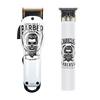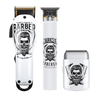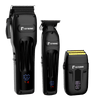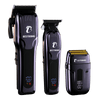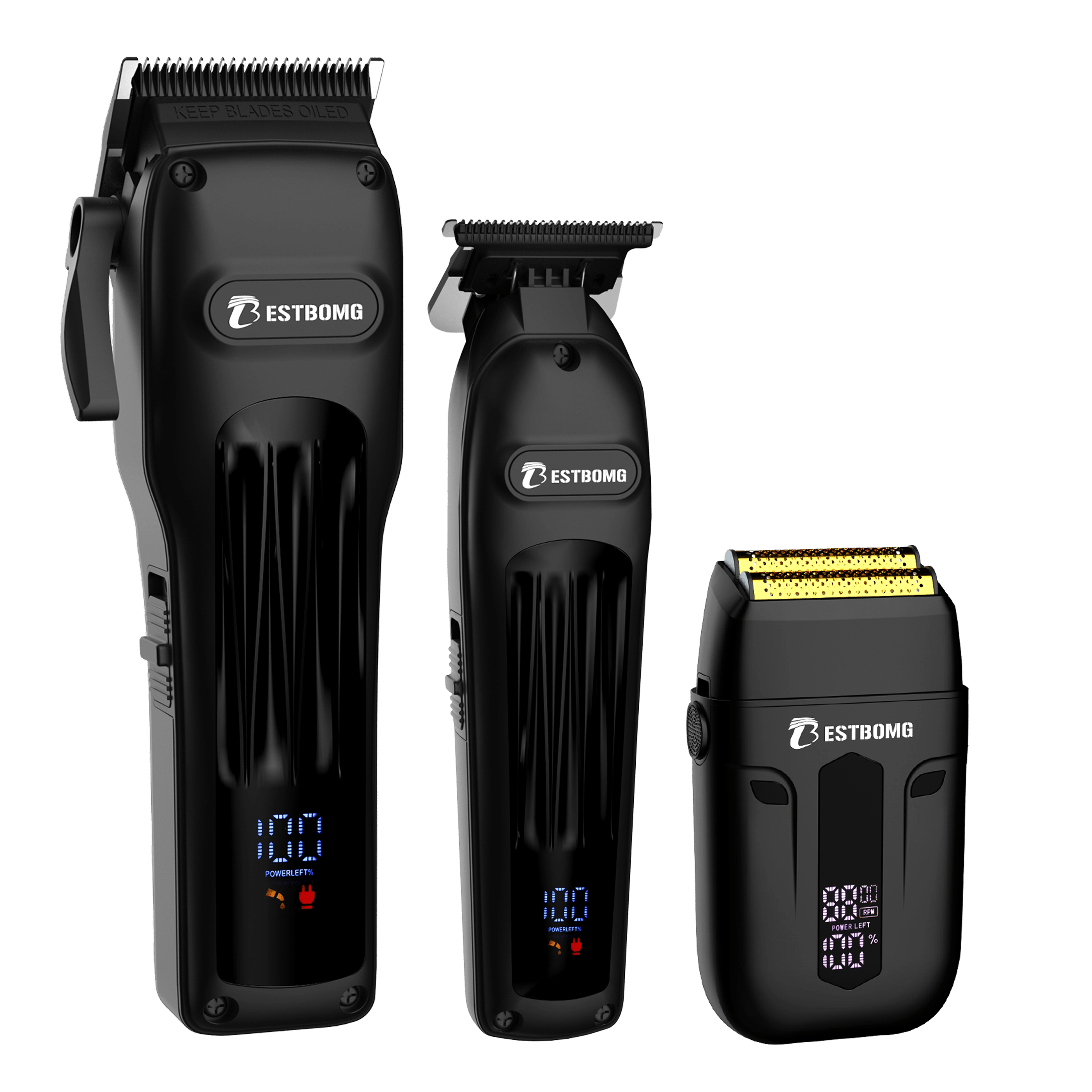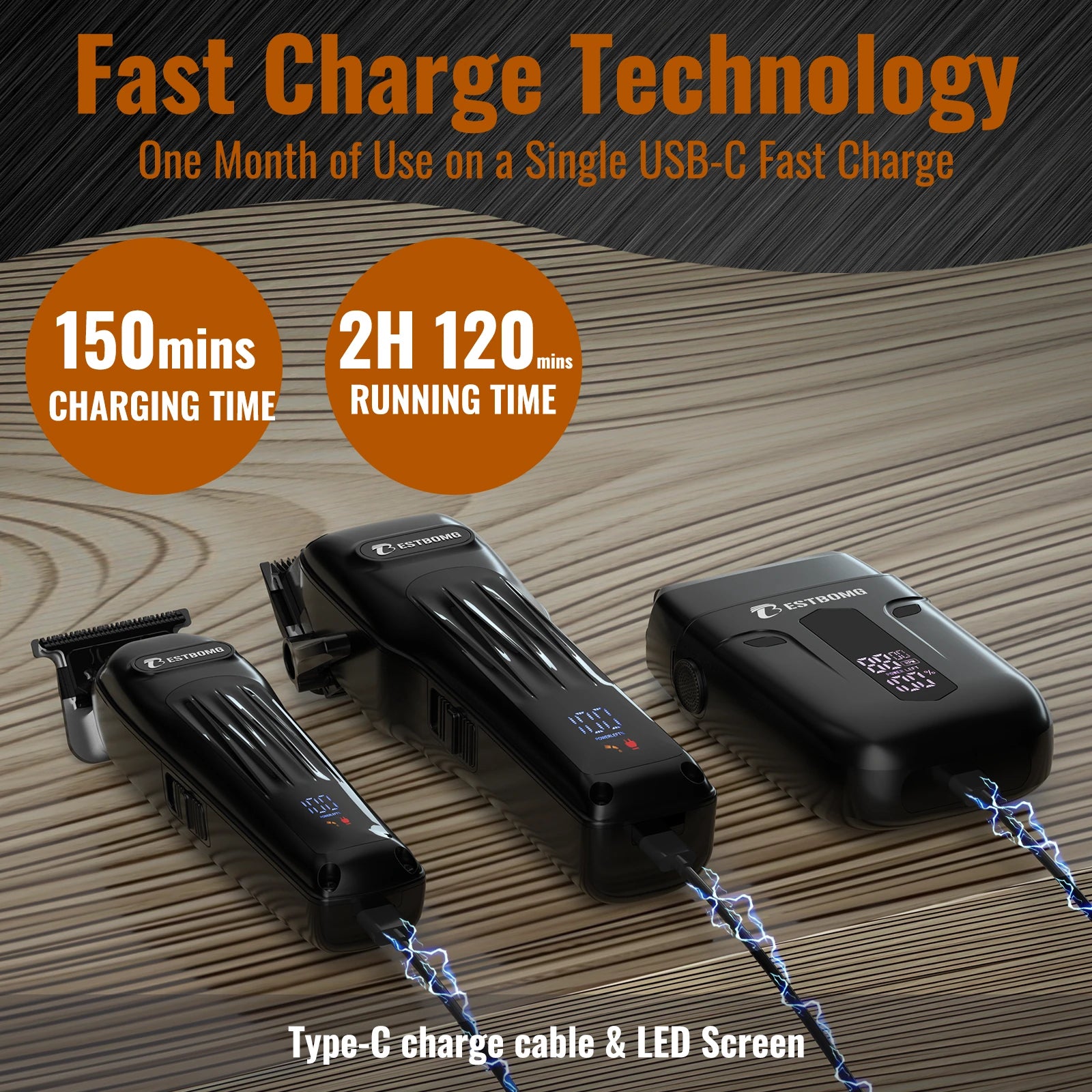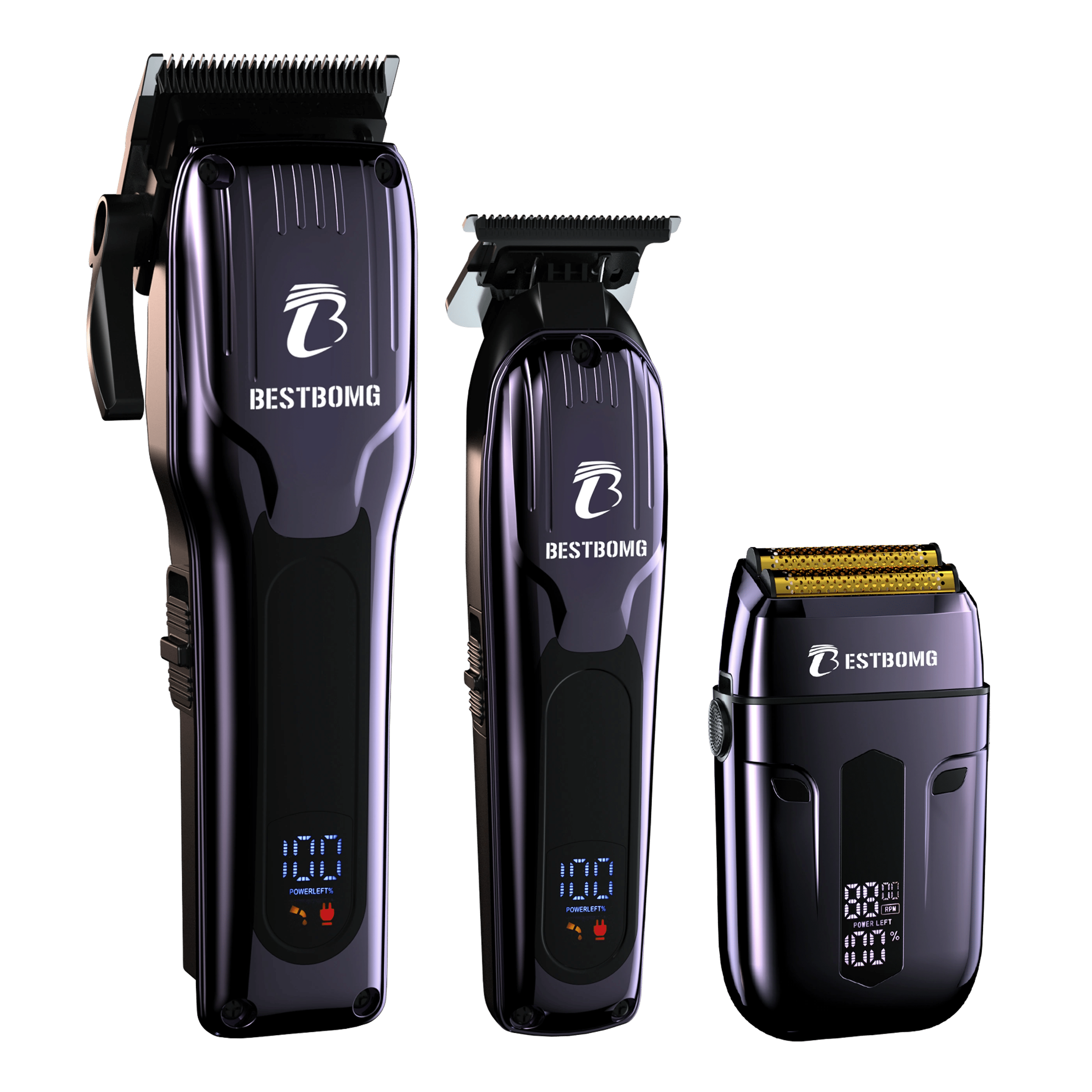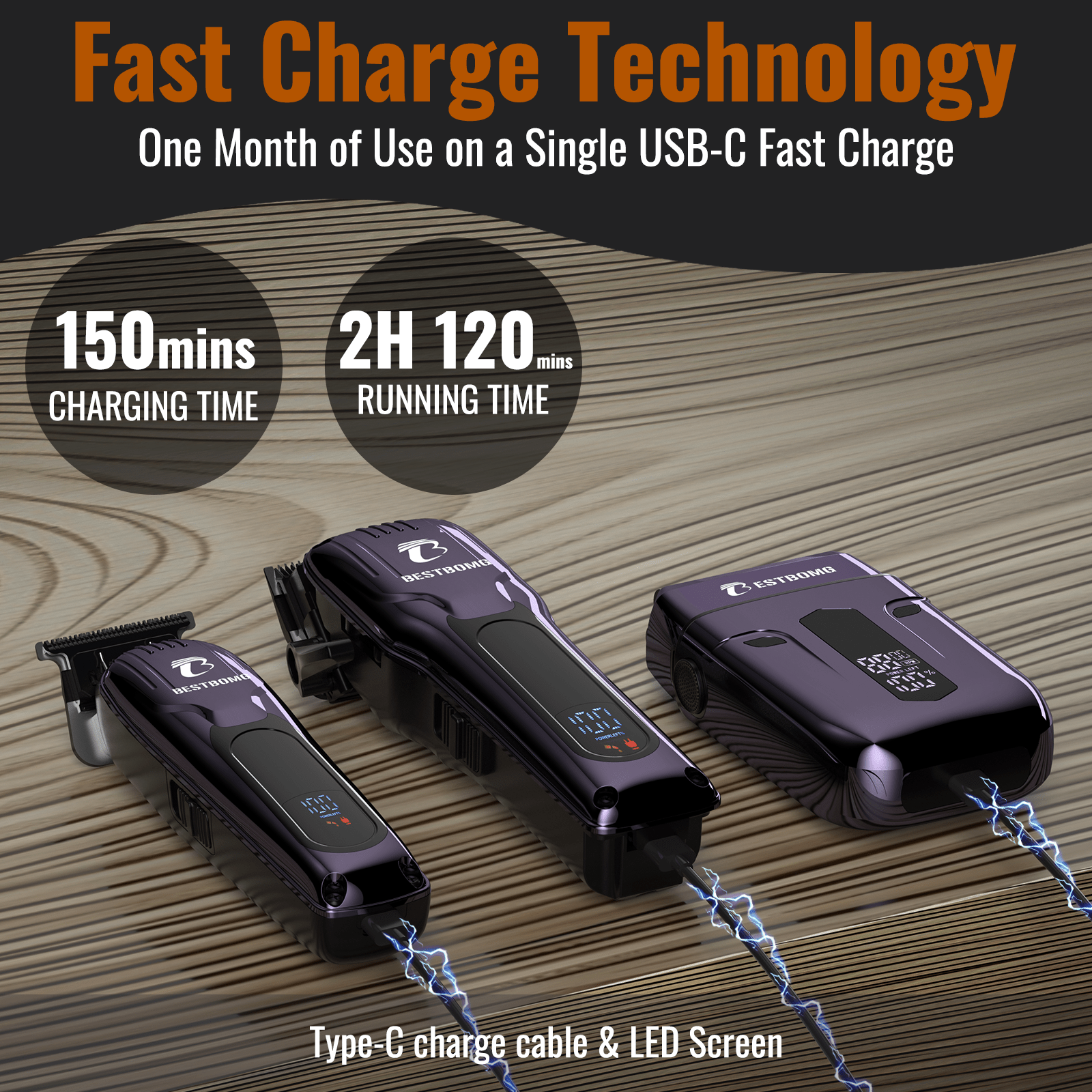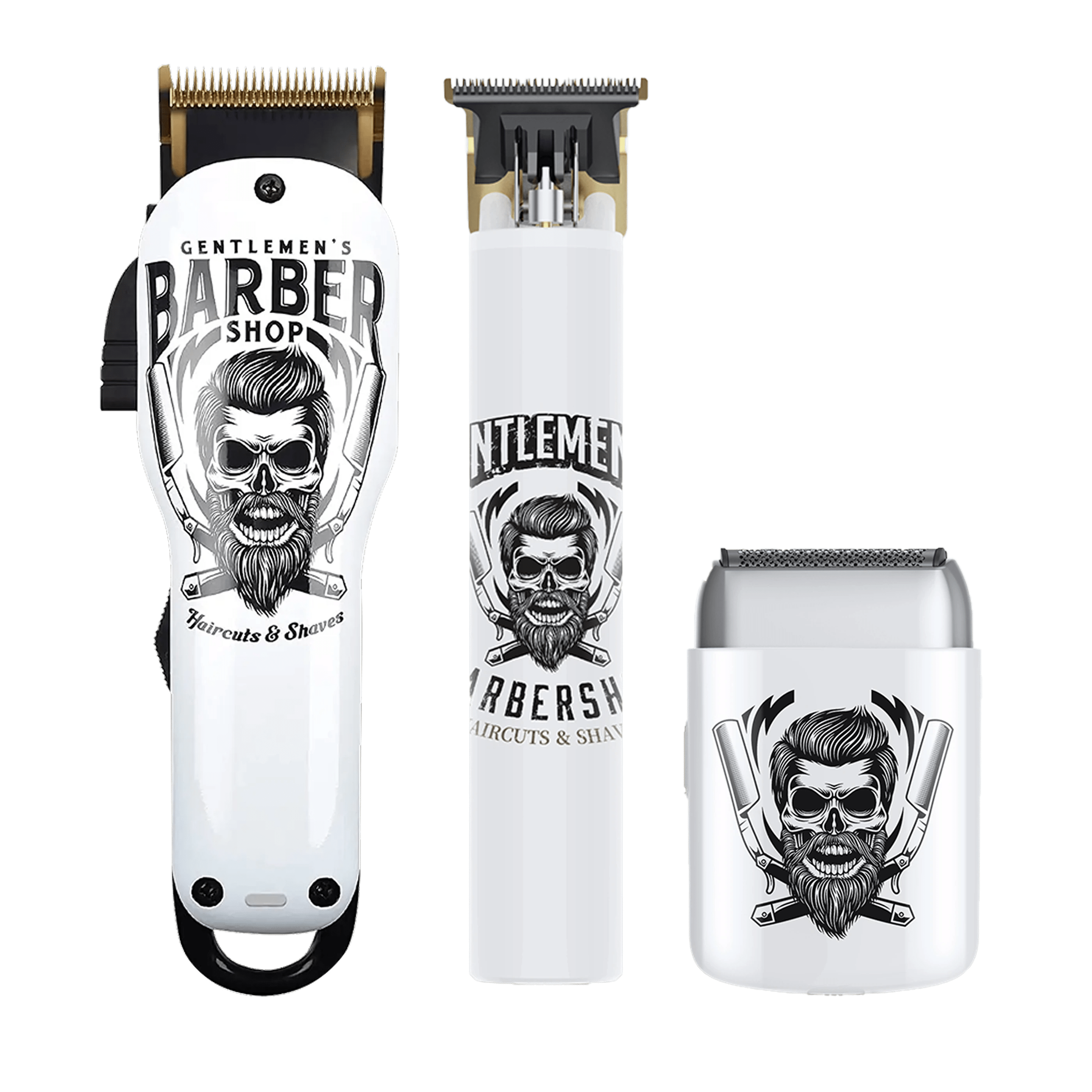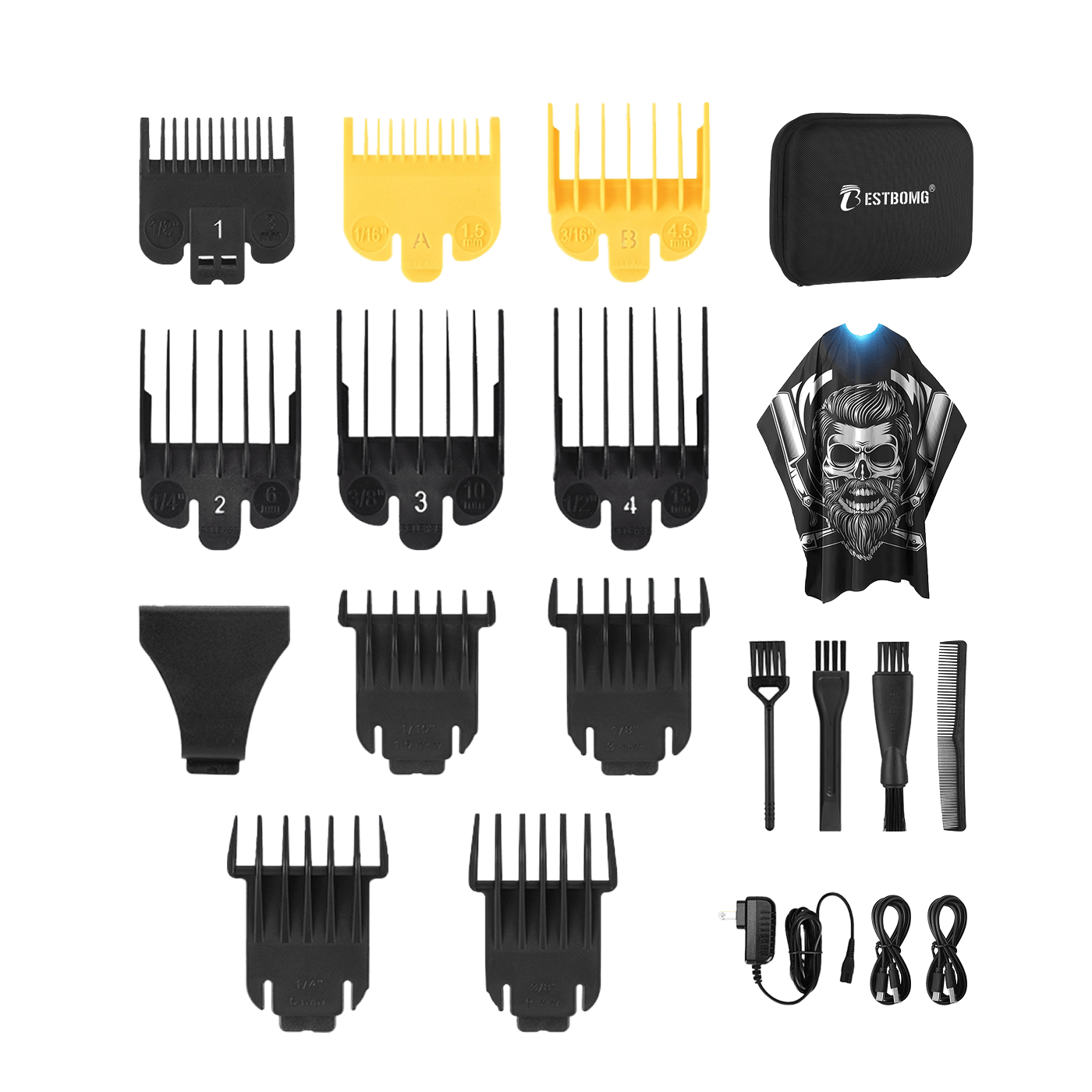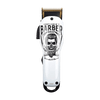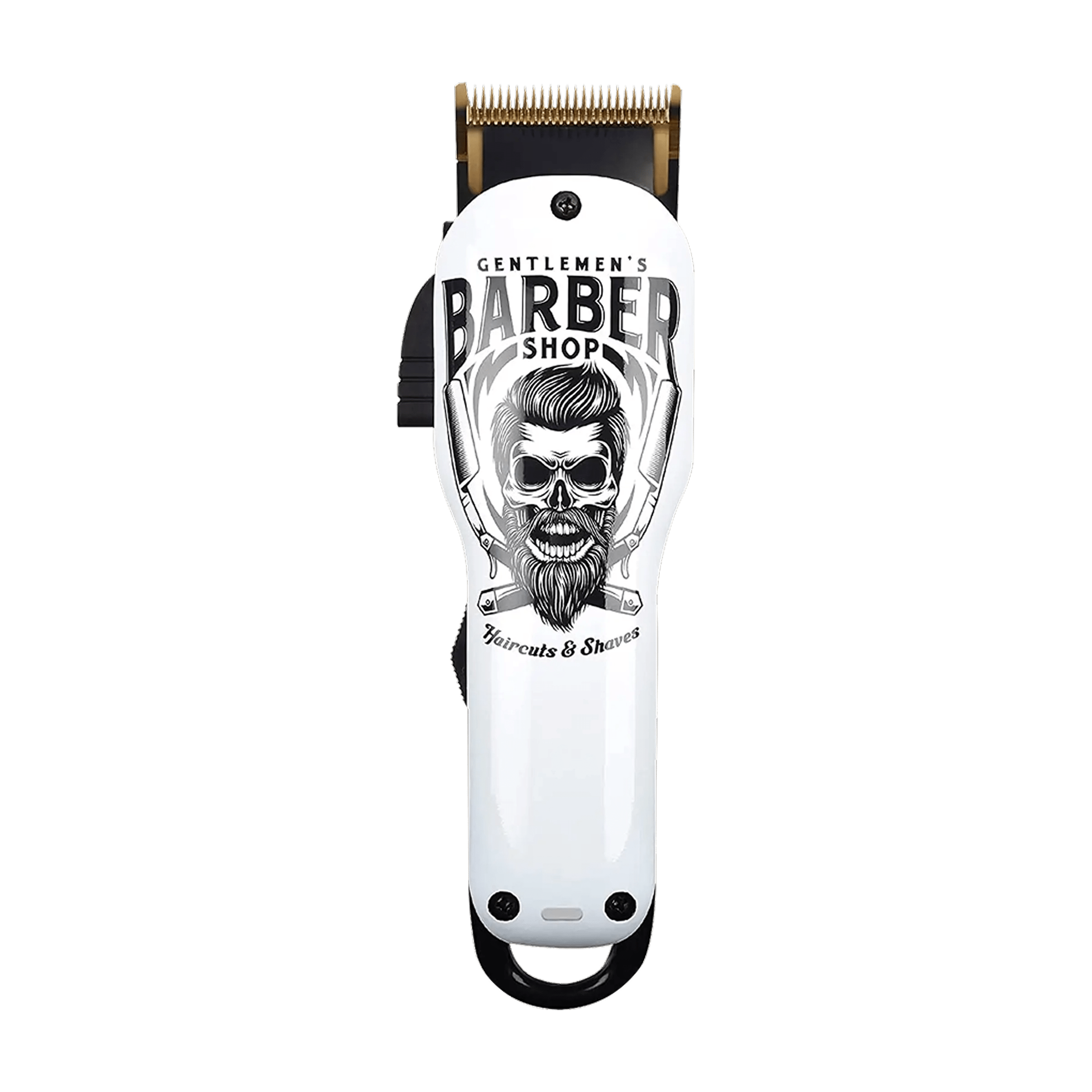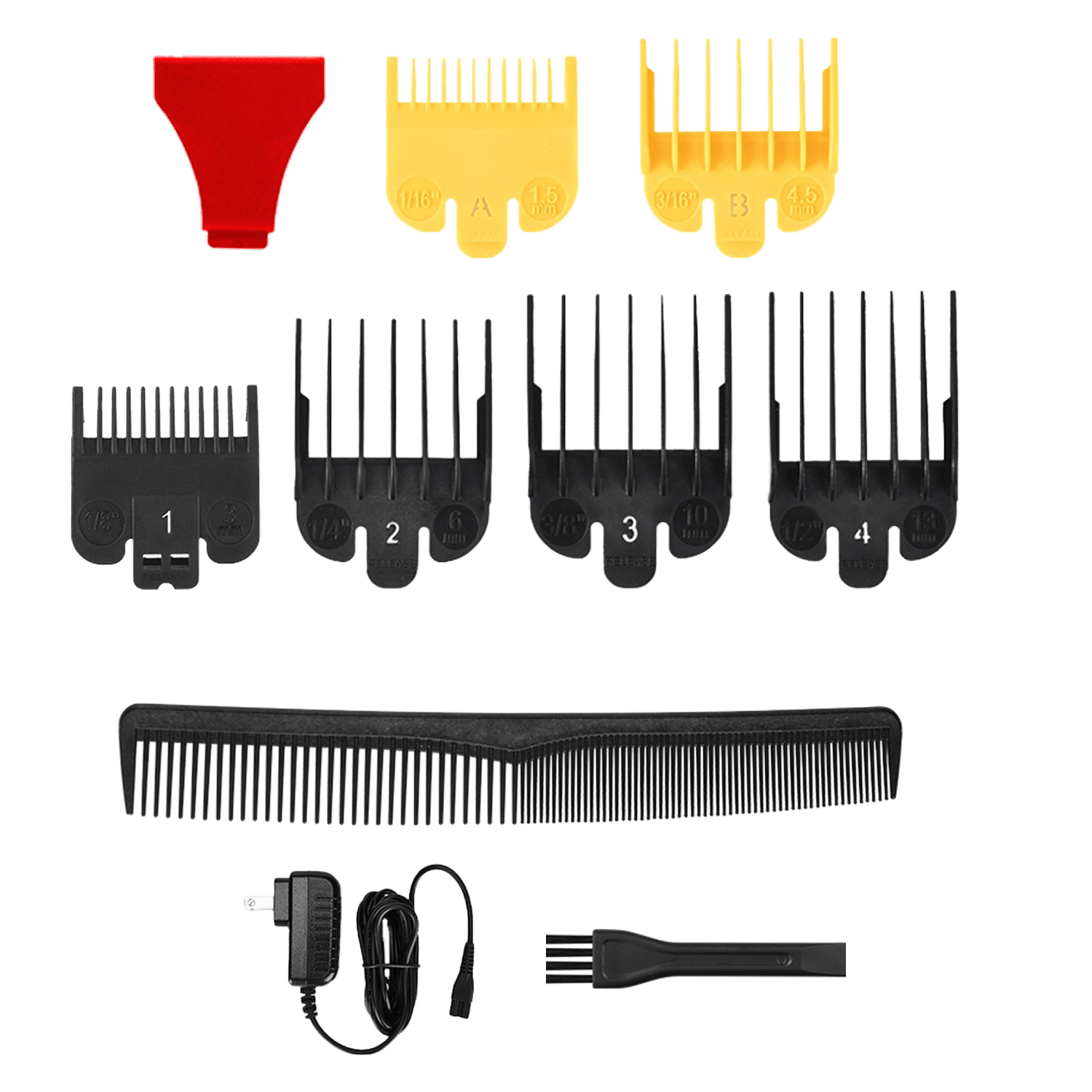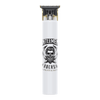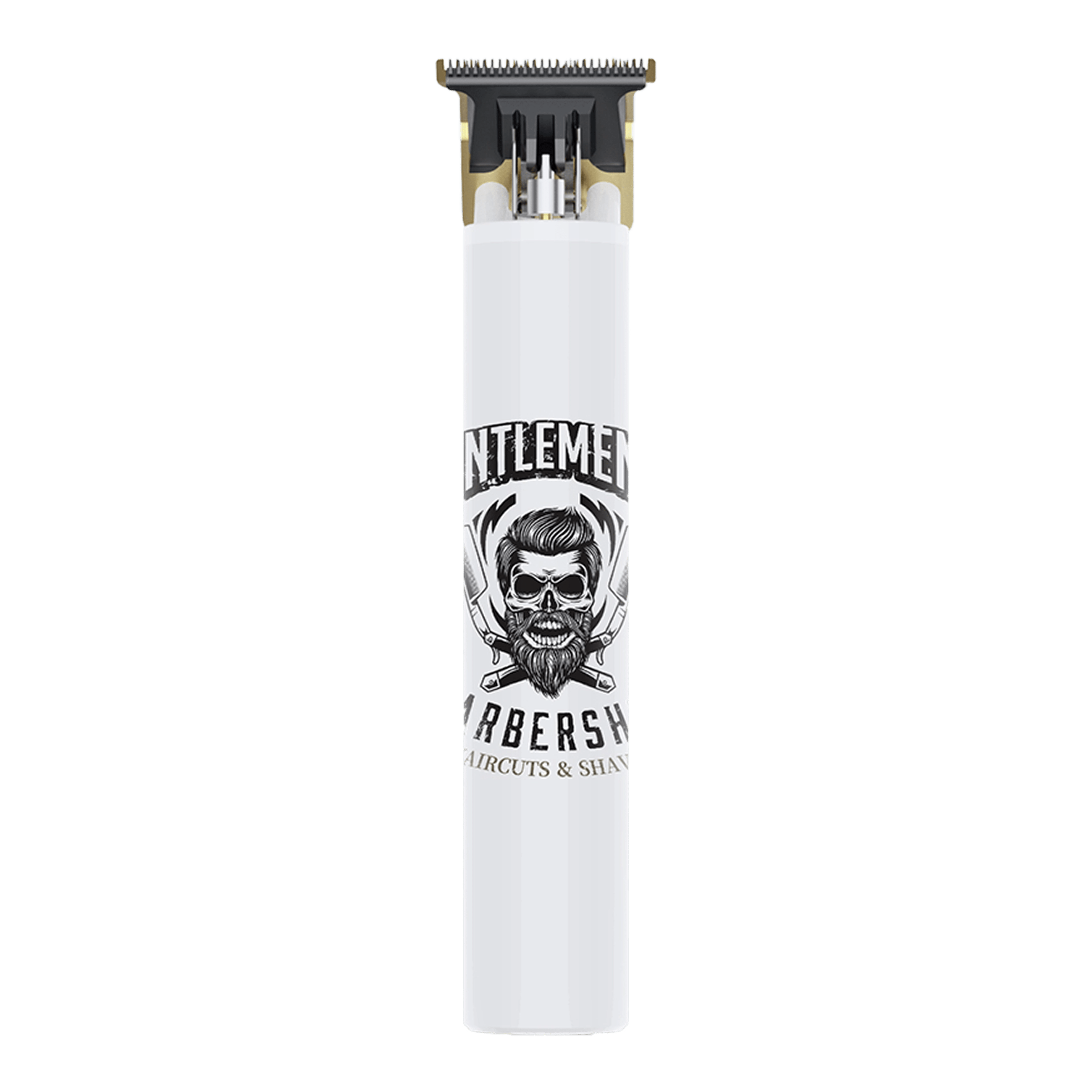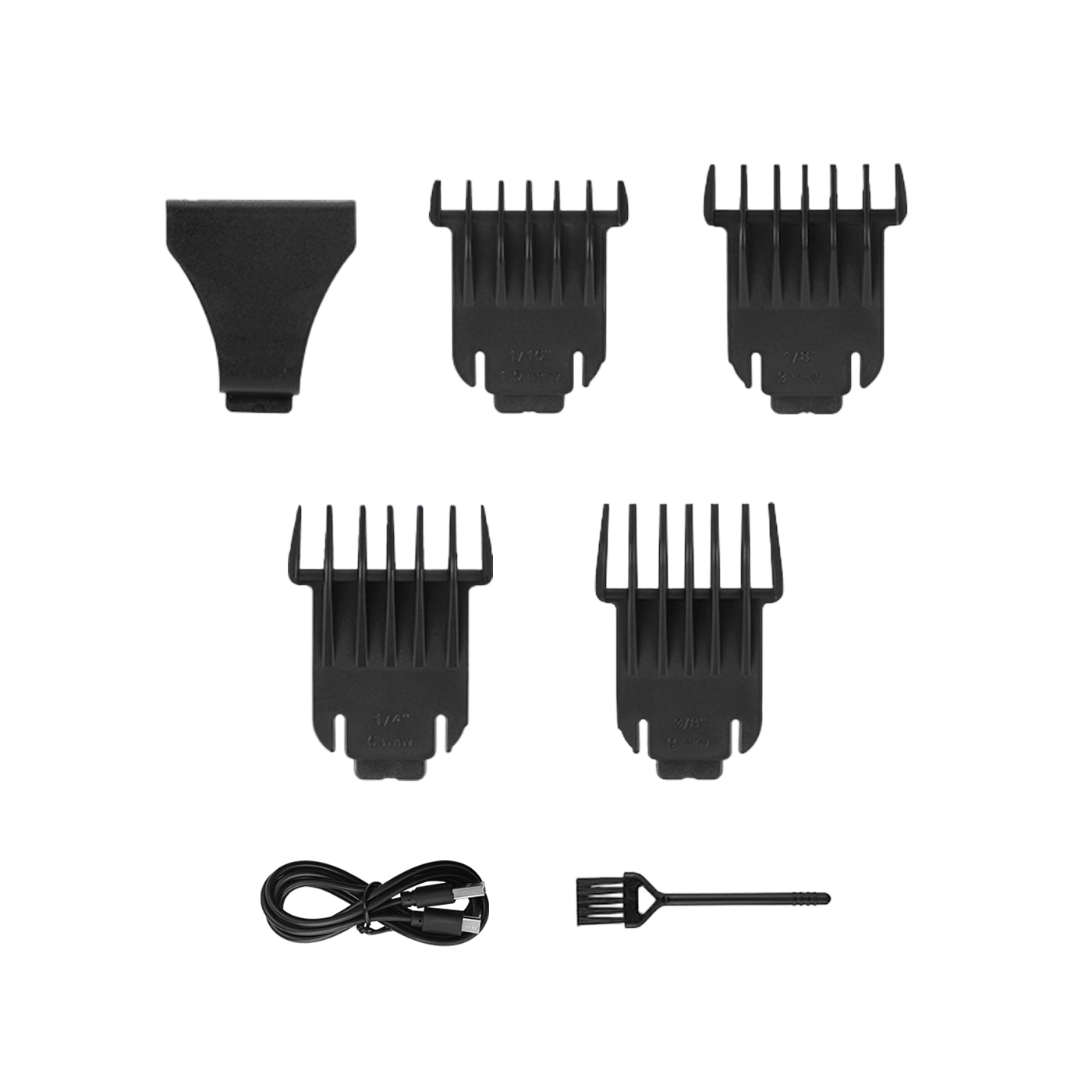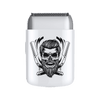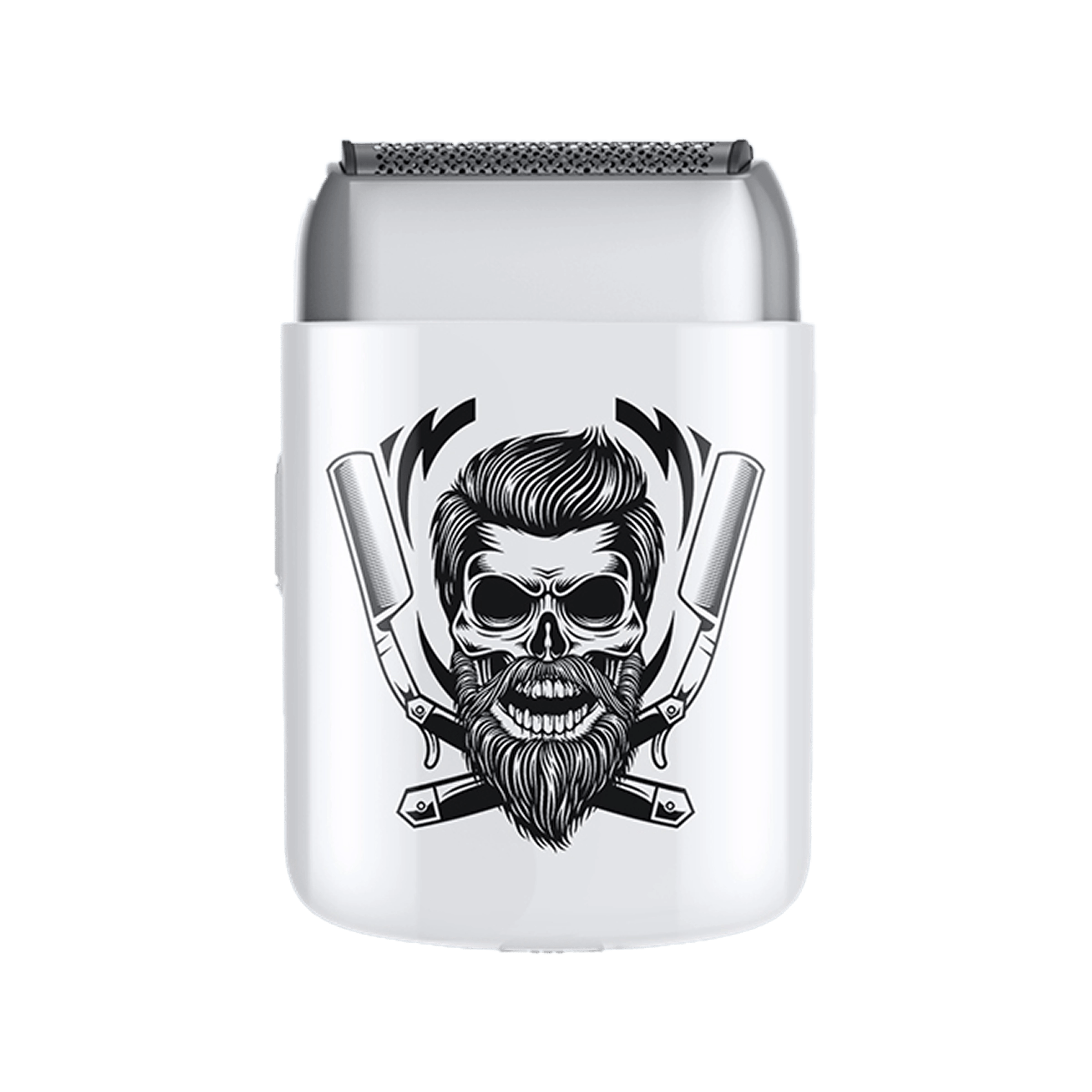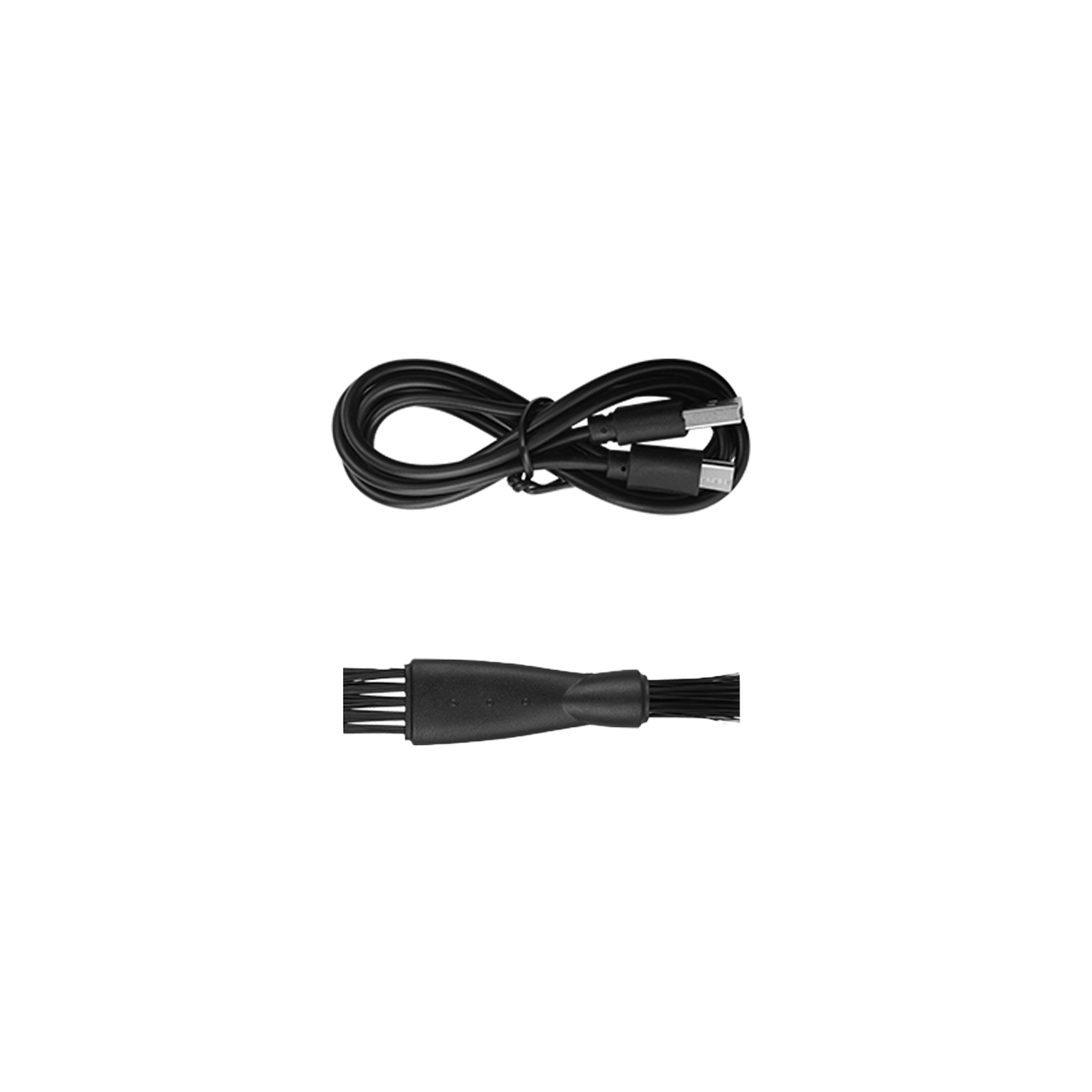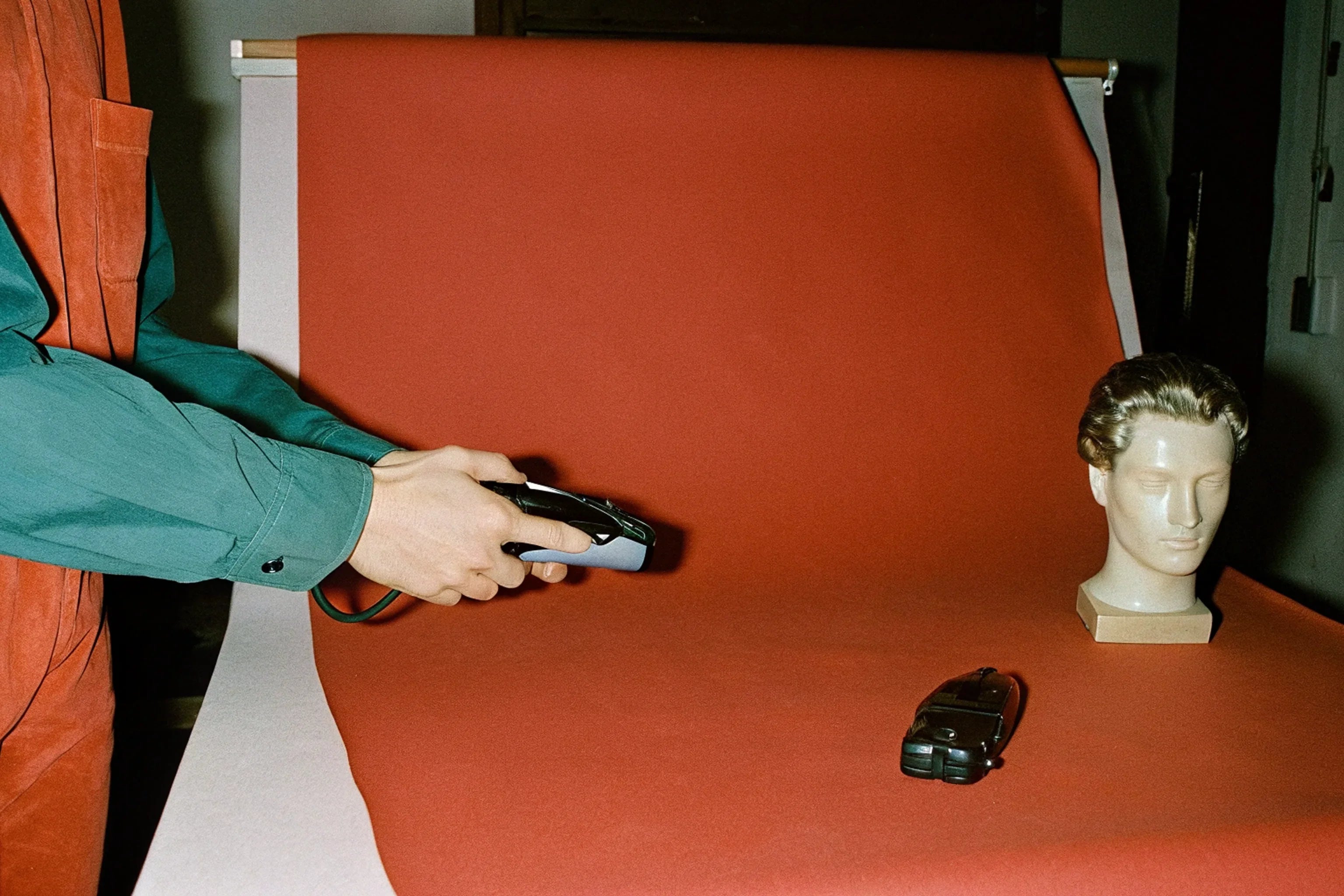Understanding hair trimmer sizes makes communicating with your barber easier and helps you cut your own hair at home. The numbers on clipper guards refer to the length of hair left after trimming—the lower the number, the shorter the cut. This guide breaks down the haircut number system so you can get the exact length and style you want every time.
What Do Hair Trimmer Numbers Mean?
The numbers in haircuts refer to the guard length attached to the clippers. Each number corresponds to a specific length of hair left on the scalp after trimming.
Hair clippers and trimmers follow a standard numbering system spanning from numbers 0 to 8. Clipper guards attach to the hair clipper, ensuring the blade cuts your hair to a certain length and not any shorter.
Key principle: Higher number guards will leave your hair longer, while lower number guards will leave you with shorter hair.
Most professional-grade clippers come with eight different guards, measured in eighths of an inch. Understanding the standard clipper guard numbering system helps you choose the right size for your desired style. Quality tools like the professional clipper kit include a complete range of guards from #1 through #8.

Hair Trimmer Size Chart
Here are the standard guard numbers and sizes with their measurements:
|
Guard Number |
Inches |
Millimeters |
Hair Left |
|
0 or ½ |
1/16" |
1.5mm |
Very minimal – shaved |
|
1 |
1/8" |
3mm |
Very short |
|
1½ |
3/16" |
4.8mm |
Still very short |
|
2 |
1/4" |
6mm |
Short, less scalp showing |
|
3 |
3/8" |
10mm |
Neat and clean |
|
4 |
1/2" |
13mm |
Crew cut territory |
|
5 |
5/8" |
16mm |
Taper-ready |
|
6 |
3/4" |
19mm |
Styleable length |
|
7 |
7/8" |
22mm |
Full crew cut |
|
8 |
1" |
25mm |
Longest standard guard |
Clipper guards will dictate the length of your haircut. Your barber or stylist knows that these numbers correspond with different lengths, and depending on the hairstyle you ask for, they may use multiple guards during your haircut.
Understanding Each Trimmer Size
The way guard sizes look depends on hair thickness and texture. On some people, a number 2 is clear to the scalp; on others it's clean cut but you can't see skin.
General classification:
- Guards 1-3: Very short, potential of seeing scalp through hair
- Guards 4-6: Medium length, standard "businessman" cut, not extreme either way
- Guards 7-8: Similar to hair trimmed with scissors, doesn't take much off unless hair is super long

Number 0 or ½ Haircut
This is as short as you can go without being completely bald. A number 0 haircut means using clippers with no guard at all.
When you don't use any guard and the lever is closed, you get the closest cut possible to your skin. This creates what's called a "zero-gap" cut because there's no space between the blades.
Best for: Skin fades, shaved heads, super low maintenance
Watch out: Your scalp will be completely visible, so you'll need good scalp care

Number 1 Haircut
A short buzz cut with just enough hair to keep things interesting. This guard leaves 1/8 inch of hair when closed.
It's only slightly longer than a 0, but still very short. Your scalp will show through completely. Barbers often switch between open and closed positions to blend smoothly.
Haircut styles: Buzz cut, fade, fade pompadour
Works best for: Men with strong hairlines or those who like bold styles

Number 1½ Haircut
This guard cuts to 3/16 inch when closed. When open, it's the same as a closed number 2 guard (1/4 inch).
Still buzz-cut territory with exposed scalp. Often used with numbers 1 and 2 to create smooth fades.
Haircut styles: Buzz cut, fade, textured crop
Style idea: Great for textured crops with very short sides and longer hair on top

Number 2 Haircut
The classic buzz cut. Still short but with better coverage. Leaves 1/4 inch of hair when closed.
May show less scalp than shorter guards, but if you have thin hair, consider starting with a number 3. Remember: you can always cut more off, but you can't put hair back on.
Haircut styles: Buzz cut, fade, Caesar
Perfect for: Men with thinning hair - hides scalp better than shorter guards. Very popular for fades.
Number 3 Haircut
Still a buzz cut, but on the longer side. This is one of the most requested all-over cuts.
Leaves 3/8 inch of hair when closed (about 7/16 inch when open). If you want a fade, many barbers start with a 3 and work down to 2 and lower.
Haircut styles: Buzz cut, fade, crew cut
Great for: Any hair type. It's neat, smart, and low-maintenance - perfect if you want short but not too short.
Number 4 Haircut
Now you're in crew cut territory. A number 4 leaves 1/2 inch of hair when closed.
For a tapered look, start with shorter guards at the bottom and work up to a 4 on top.
Haircut styles: Buzz cut, crew cut, professional styles
Pro tip: Pair with shorter fades on the sides for more style. Popular choice when growing out from shorter cuts.
Number 5 Haircut
Finally enough length to style with some product. This guard offers real styling flexibility.
Cuts to 5/8 inch when closed. It's neat and polished but leaves enough length to use a comb or brush.
Haircut styles: Taper cuts
Barber's advice: Great for those who want shape without dramatic fades. Perfect for tapered styles.
Number 6 Haircut
Enough length to part your hair or brush your bangs up. You're now in "style it your way" territory.
Cuts to 3/4 inch when closed. A number 6 gives you enough hair to brush forward, part to the side, or slick back.
Haircut styles: Taper, brushed styles, parted cuts
Best for: Keeping volume while staying tidy. Often used on top while shorter numbers go on the sides.
Number 7 Haircut
Lots of styling flexibility. You can pull off side parts, peaked cuts, crew cuts, or Caesar cuts.
Cuts to 7/8 inch when closed. Often used for fuller crew cuts or textured styles that lean shorter.
Haircut styles: Full crew cut, textured styles
Works with: Shorter guards on sides for a modern look. Especially good for thick hair.
Number 8 Haircut
This is as long as clipper guards get. Cuts to 1 full inch when closed.
Consider this length for the top while going shorter on sides and back. This is usually the longest guard before barbers switch to scissors.
Haircut styles: Long buzz cut, classic men's styles
Style tip: Works great when faded into shorter sides for contrast. Using number 8 all over keeps things simple and manageable.
Understanding the Taper Lever
A barber's clippers can have a taper lever on them. The lever moves the cutting blade closer or farther away from the fixed blade, leaving your hair shorter or longer.
A closed taper is the default for the clipper guard lengths listed above. An open taper option keeps the fixed blade farther away from the cutting blade to leave your hair longer.
How it works:
When the barber moves the lever open or closed, it's a 1/16-inch difference in length. Closed will be a shorter cut, and open will be a longer cut.
Example: A closed clipper guard 1 will leave you with 1/8 inches of hair on your head. An open clipper guard 1 leaves you with 3/16 inches of hair on your head (1/8 or 2/16 + 1/16 = 3/16). While this might not seem like a huge difference, it does impact the hair blending and tapering process.
The barber can also move the lever in between closed and open while cutting your hair to taper it for a more gradual blend. Explore versatile hair cutting kits with multiple guards that include adjustable taper levers for maximum control at home.
How to Choose the Right Trimmer Size
Choosing the right guard depends on your hair type, desired style, and maintenance preferences.
For your hair type:
- Thinner hair: Consider a number 2 or 3 to avoid showing too much scalp
- Thick hair: Higher numbers like 6 or 7 offer structure while allowing for styling
- Curly or textured hair: Shorter lengths like 1 or 2 can look sharper and more defined
For your lifestyle:
Clippers are typically used for shorter haircuts. If you have medium-length hair or long hair, your barber might use scissors instead.
Maintenance needs:
Shorter cuts like a number 1 or 2 might need a tidy-up every 2-3 weeks. Regular trims every 3-4 weeks help keep your style sharp for most guard sizes.
Don't be afraid to ask your barber for recommendations—they'll factor in your head shape, hair type, and lifestyle to help you choose.
Popular Hairstyles by Trimmer Size
It's much easier to understand what clipper guard lengths look like by viewing actual haircuts.

Fade cut:
- #1/2 on lower side and back
- #2 on upper side
- 0, 1, 2, and 3 guards are typically used for a fade, with 3 creating the longest part

Brush cut:
- #1/2 on front side
- #1 rest of side and back
- #7 on top

Textured cut:
- #3 on lower sides
- #5 on upper sides
- #8 on top

Side part:
- #4 on sides
- #8 on top

Buzz cut:
-
#2 on sides and top (all over)

Tousled cut:
- #3 for lower sides
- #5 for upper sides
Understanding proper skin care after clipping helps prevent irritation, especially with shorter guard sizes that expose more scalp.
Maintaining Your Haircut
Once you've got your ideal haircut length, maintaining it is key.
Trimming frequency:
- Guards 0-2: Every 2-3 weeks for sharp maintenance
- Guards 3-5: Every 3-4 weeks to maintain shape
- Guards 6-8: Every 4-6 weeks, similar to scissor cuts
Scalp care is especially important for shorter cuts where scalp is more exposed.
Frequently Asked Questions
How long is a number 3 haircut?
A number 3 haircut leaves about 3/8 inch (10mm) of hair on your head. That's roughly the length of a pencil eraser.
It's one of the most popular guard sizes because it looks neat and tidy but still gives you decent hair coverage. You won't see much scalp through the hair. The number 3 is also the longest guard usually used on top during a fade haircut.
How do I know my trimmer size?
Look for the number printed on the guard itself. Most guards have the number clearly marked (1, 2, 3, etc.) right on the plastic.
If the numbers have worn off, you can measure:
- Each number equals that many eighths of an inch
- So #2 = 2/8 inch (or 1/4 inch)
- #4 = 4/8 inch (or 1/2 inch)
When you're not sure, always test on a hidden area first or start with a longer guard and work your way shorter.
What does 1, 2, 3, 4, 5 mean in haircuts?
These numbers tell you how much hair will be left after cutting:
- Number 1: Leaves 1/8 inch (very short, lots of scalp showing)
- Number 2: Leaves 1/4 inch (short but fuller than #1)
- Number 3: Leaves 3/8 inch (medium short, good coverage)
- Number 4: Leaves 1/2 inch (longer, good for styling)
- Number 5: Leaves 5/8 inch (quite long, lots of styling options)
Think of it this way: lower numbers = shorter hair, higher numbers = longer hair. Each number up adds another 1/8 inch of length.
What does 0.8, 1.4, 2.0 mean on clippers?
These are millimeter measurements instead of guard numbers. You'll find them on fancy adjustable clippers, especially European brands.
Here's how they compare to regular guard numbers:
- 1.5mm ≈ #0 guard
- 3mm ≈ #1 guard
- 6mm ≈ #2 guard
- 10mm ≈ #3 guard
These precise measurements give barbers more exact control for detailed fades and blending work.
Does a #7 or #10 blade cut shorter?
A #10 blade cuts shorter than a #7 blade.
Important: Blade numbers work opposite to guard numbers. With blades, higher numbers mean shorter cuts. With guards, higher numbers mean longer cuts.
- #10 blade leaves about 1/16 inch of hair (very short)
- #7 blade leaves about 1/8 inch of hair (slightly longer)
Blade numbers refer to the actual cutting blade, not the plastic guards that attach to it. You'll see these mostly in pet grooming and professional barber shops.
What does 2.0 mean on clippers?
The 2.0 means 2.0 millimeters of cutting length. This is slightly shorter than a standard #1 guard (which cuts at 3mm).
Millimeter measurements are more precise than regular numbered guards. They're common on:
- Adjustable European clippers
- Professional barber clippers
- High-end trimming tools
Some clippers use only millimeter markings instead of numbers for exact length control during detailed work.
Ready to master your haircut at home? Browse our complete selection at Bestbomg featuring professional clippers, guards, and grooming tools for every style from buzz cuts to textured fades.
Read more
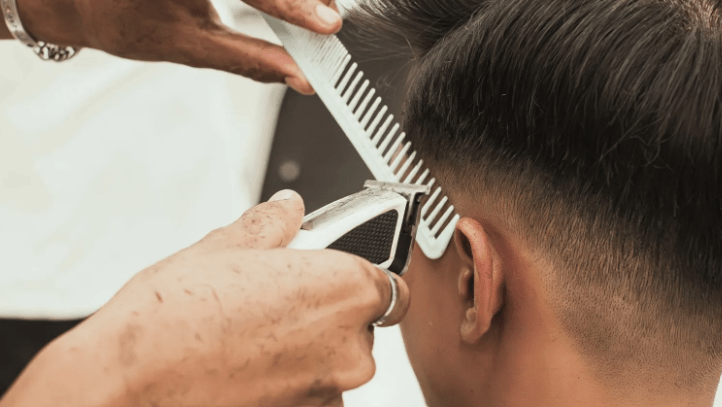
20 Best Hair Clippers for Fades | Top Picks & Reviews
Getting a clean fade at home sounds easy but the wrong clippers can turn a sharp style into a patchy mess. Have you ever tried to fade your hair only to end up with uneven lines? Do your clippers p...
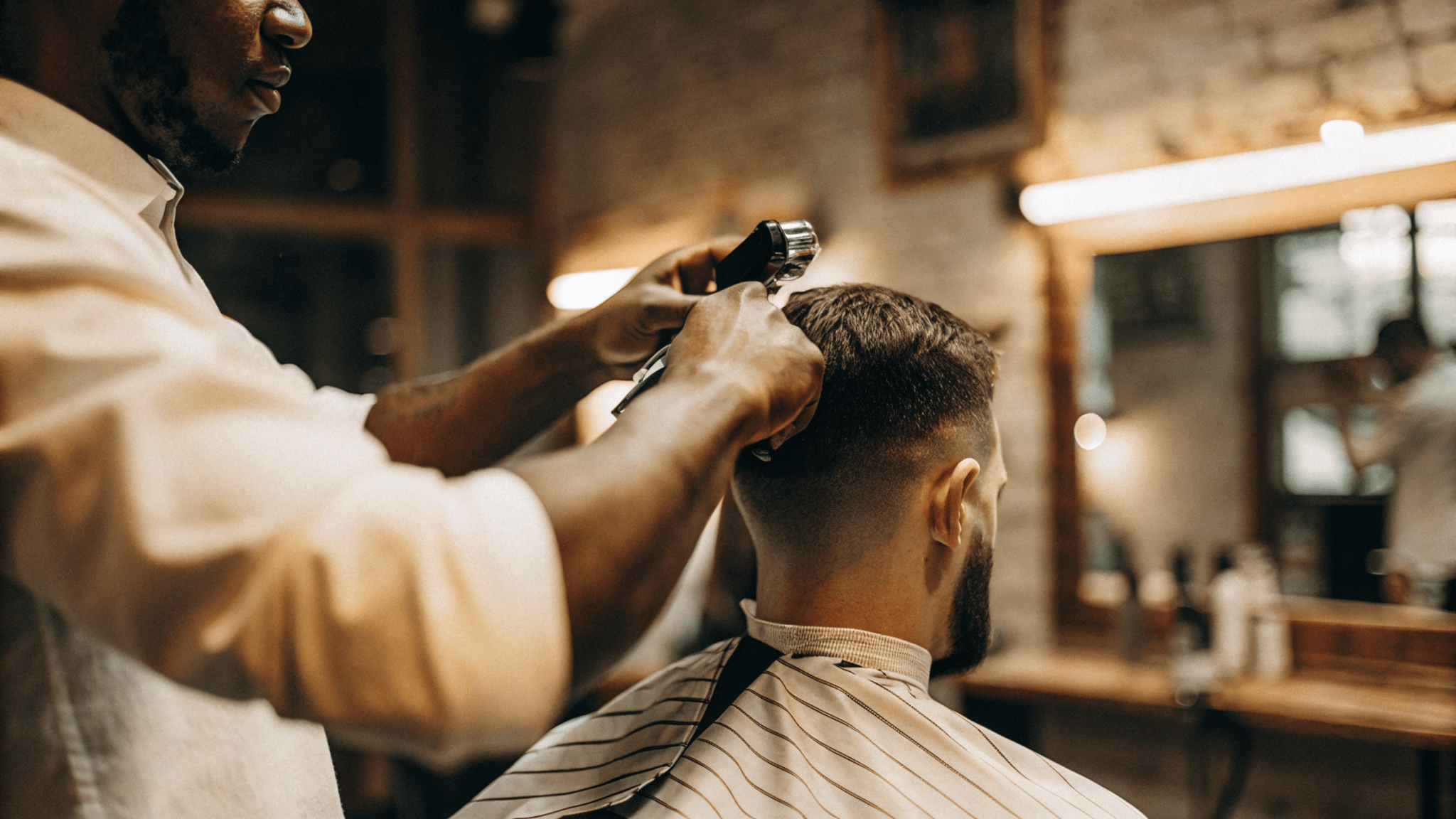
Foil Shaver Before and After: What to Expect for a Smooth Shave
Understanding what happens before and after using a foil shaver helps you achieve the best results while avoiding common mistakes. Foil shavers deliver a close, comfortable shave when used correctl...
